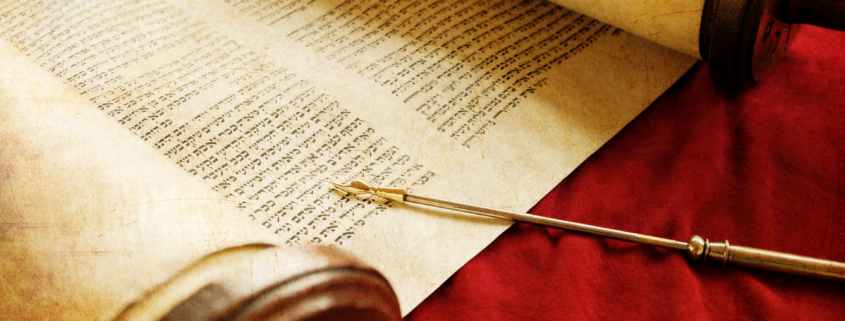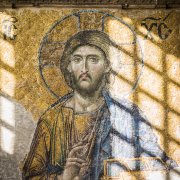Where is Messiah in the Hebrew Scriptures? Part II
To read Part I of this series, click here.
In this second article on Messiah in the Hebrew Scriptures, I am going to introduce you to a concept that I believe is the key to finding Yeshua throughout Israel’s experience in the Old Testament.
No One Can See God and Live
In Exodus 33, Moses is on Mount Sinai, speaking with God. Moses asks,
“Please show me your glory” (Ex. 33:18, ESV).
To this God replies,
“You cannot see My face, for no man can see Me and live!” (Exodus 33:20, NASB95)
In other words, if you see God, you die. No one can survive the experience of seeing the essence of God in his infinite glory. This inability to see God fits with his transcendence. He dwells in inapproachable light, as Paul said in 1 Timothy 6:16. If we were to see him, we would be snuffed out like darkness in the presence of the sun.
Doesn’t Scripture Say that People Saw God?
But how could this be, if Scripture says over and over again that people see God? “No man can see Me and live?” Then what about Abraham, who saw God in Genesis 18? What about just a few chapters before Moses asked to see God’s glory? In Exodus 24 we read,
“Then Moses went up with Aaron, Nadab and Abihu, and seventy of the elders of Israel, and they saw the God of Israel; and under His feet there appeared to be a pavement of sapphire, as clear as the sky itself. Yet He did not stretch out His hand against the nobles of the sons of Israel; and they saw God, and they ate and drank.” (Exodus 24:9–11, NASB95)
Beyond this example, Isaiah said that he saw the Lord:
“In the year of King Uzziah’s death I saw the Lord sitting on a throne, lofty and exalted, with the train of His robe filling the temple.” (Isaiah 6:1, NASB95)
Ezekiel said that he saw the Lord:
“Now above the expanse that was over their heads there was something resembling a throne, like lapis lazuli in appearance; and on that which resembled a throne, high up, was a figure with the appearance of a man. Then I noticed from the appearance of His loins and upward something like glowing metal that looked like fire all around within it, and from the appearance of His loins and downward I saw something like fire; and there was a radiance around Him. As the appearance of the rainbow in the clouds on a rainy day, so was the appearance of the surrounding radiance. Such was the appearance of the likeness of the glory of the Lord. And when I saw it, I fell on my face and heard a voice speaking.” (Ezekiel 1:26–28, NASB95)
Jacob said that he saw the Lord, and even wrestled with him:
“Then Jacob was left alone, and a man wrestled with him until daybreak. When he saw that he had not prevailed against him, he touched the socket of his thigh; so the socket of Jacob’s thigh was dislocated while he wrestled with him. Then he said, ‘Let me go, for the dawn is breaking.’ But he said, ‘I will not let you go unless you bless me.’ So he said to him, ‘What is your name?’ And he said, ‘Jacob.’ He said, ‘Your name shall no longer be Jacob, but Israel; for you have striven with God and with men and have prevailed.’ Then Jacob asked him and said, ‘Please tell me your name.’ But he said, ‘Why is it that you ask my name?’ And he blessed him there. So Jacob named the place Peniel, for he said, ‘I have seen God face to face, yet my life has been preserved.’” (Genesis 32:24–30, NASB95)
Manoah and his wife saw God:
“So Manoah said to his wife, ‘We will surely die, for we have seen God.’” (Judges 13:22, NASB95)
In all these examples, Israelites saw God! How is this possible, if no man may see him and live? This seems to be a fundamental contradiction—but it’s not. Faithful Jews living before Yeshua started putting the pieces together, and Yeshua solved it for us altogether.
The Riddle Solved in the New Testament
In the Gospel of John, John writes,
“No one has seen God at any time.” (John 1:18a, NASB95)
This is in line with what God said to Moses on the mountain. But it still leaves us wondering why the Scriptures say that people have seen God before.
Yeshua and the apostles solve this problem for us by being precise. Here’s what Yeshua said:
“He who has seen Me has seen the Father; how can you say, ‘Show us the Father’? Do you not believe that I am in the Father, and the Father is in Me? The words that I say to you I do not speak on My own initiative, but the Father abiding in Me does His works. Believe Me that I am in the Father and the Father is in Me; otherwise believe because of the works themselves.” (John 14:9b–11, NASB95)
Thus, whoever has seen Yeshua has seen the Father. The Son of God is the one through whom the invisible may become visible. Paul says the same in Colossians 1:15 about the Messiah:
“He is the image of the invisible God.” (Colossians 1:15a, NASB95)
So, the New Testament is saying that the Son of God is the one who takes on flesh and enables humanity to see God. That is his role as mediator. While being united with God as God, the Son also takes on physical form so that we can see, know, and hear God.
So, no man or woman alive can see God directly. We cannot stand in the presence of the infinite and holy essence of God, which the Father, Son, and Spirit share. Yes, we cannot even see the Son of God without some kind of accommodation to our finite human natures. We can only see the essence of God indirectly and partially. And whose role is it to be the one who bridges the gap for us? The Son of God. It is the Son’s role to be the one who accommodates downward to us. He accommodated to our senses and experiences by walking as a man in the garden with Adam and Eve in the cool of the day, and he accommodated to Moses’ senses by appearing as a fire in a burning bush. But the greatest accommodation that the Son of God ever made to our senses was when he did not just come in the appearance of a man, but he actually became a man with a full human nature for our salvation.
So, the New Testament teaches us an important principle for the events of the Old Testament.
If God truly appeared physically in the Hebrew Scriptures, it was not the Father that was seen, but rather the Son. The Son is the mediator who represents the divine nature in physical form.
This principle ought to shape the way we read about God’s interactions with Israel in the Old Testament. Now, I’m not the only one to go searching for the Son of God in the Old Testament in this way. The early believers in Jesus were very aware of this as well.
A Tradition of Seeing Yeshua in the Hebrew Scriptures
The church father Justin Martyr (AD 160) not only affirmed that Jesus saved Israel from Egypt, but he extended the logic to the Son speaking to Moses in the bush and the Son filling the tabernacle with glory.1 Likewise, Tertullian (AD 180) wrote,
“It was the Son, therefore, who was always seen, and the Son who always conversed with men.”2
Theophilus of Antioch (AD 170) declared,
“The Word, then, being God, and being naturally produced from God, whenever the Father of the universe wills, He sends Him to any place; and He, coming, is both heard and seen, being sent by Him, and is found in a place.”3
Finally, in a council in Sirmium dating to around AD 351, it was said:
If any one says that it was not the Son that was seen by Abraham, but the unbegotten God, or a part of him, let him be anathema. If any one says that it was not the Son that as man wrestled with Jacob, but the unbegotten God, or a part of him, let him be anathema.4
So, there is a great tradition of looking for all of the places in the Hebrew Scriptures where God was seen and interacted with, and interpreting those events as appearances of the Son of God.
Footnotes
- Justin Martyr, Dialogue with Trypho 120, 127; 1 Apology 63.
- Tertullian, Against Praxeas 15 (ANF 3:611).
- Theophilus of Antioch, Autocyclus 2.22 (ANF 2:103).
- Ecclesiastical History 2.30. Socrates Scholasticus, “The Eccesiastical History, by Socrates Scholasticus,” in Socrates, Sozomenus: Church Histories, ed. Philip Schaff and Henry Wace, trans. A. C. Zenos, vol. 2, A Select Library of the Nicene and Post-Nicene Fathers of the Christian Church, Second Series (New York: Christian Literature Company, 1890), 57.









